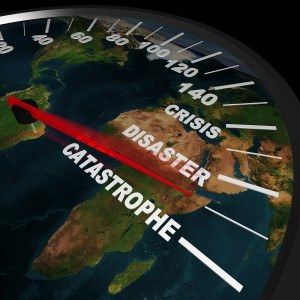Global insured losses from natural disasters during the 2019 first half reached an estimated $20 billion, according to Aon’s “Global Catastrophe Recap: First Half of 2019.”
The report noted that the number is 26 percent lower than the H1 average of $27 billion during the years 2000-2018.
 Meanwhile economic losses (which include insured losses) in H1 2019 came to $73 billion, a 22 percent drop from the 18-year average of $94 billion, said the report, which is published by Impact Forecasting, the catastrophe model development team of Aon’s Reinsurance Solutions business.
Meanwhile economic losses (which include insured losses) in H1 2019 came to $73 billion, a 22 percent drop from the 18-year average of $94 billion, said the report, which is published by Impact Forecasting, the catastrophe model development team of Aon’s Reinsurance Solutions business.
Natural disasters claimed at least 3,800 lives during the first half of 2019, significantly below the long-term (1980-2018) average of 37,400 and a median of the same period (8,500). Tropical cyclones and flooding were the deadliest perils of the first two quarters of 2019, responsible for at least 1,500 and 1,425 deaths, respectively.
According to the report, there were an estimated 163 natural disaster events in H1 2019, which was below the 18-year average of 180 and the median of 182. There were at least 17 separate billion-dollar economic events in H1 2019 – led by the United States and Asia Pacific (APAC) with six events each; Europe, Middle East and Africa (EMEA) with four events, and the Americas with one event.
The first six months were marked by many smaller- and medium-scale disasters, with EMEA recording 50 events, followed by APAC (45), the U.S. (37) and the Americas (20).
“While the first half of 2019 was not an abnormally costly start to the year for the insurance industry or federal governments around the world, it was notably impactful from a humanitarian perspective,” said Steve Bowen, Impact Forecasting director and meteorologist.
“Numerous record-breaking weather events – including tropical cyclones, precipitation, and extreme temperatures – highlighted the continued vulnerabilities faced by populations in developing, emerging, and developed countries,” he added.
“The events of this year already highlight the need to enhance mitigation and resilience measures by modernizing infrastructure, minimizing the protection gap, and incorporating a combination of public and private market solutions. This will be even more important as we face more impactful small and large-scale weather and climate-enhanced events in the future,” Bowen affirmed.
Source: Aon/Impact Forecasting
*A version of this story appeared previously in our sister publication Insurance Journal.





















 NOAA Announces Latest AI-Driven Global Weather Models
NOAA Announces Latest AI-Driven Global Weather Models  California Workers Comp Combined Ratio for 2024 Highest in 20-Plus Years
California Workers Comp Combined Ratio for 2024 Highest in 20-Plus Years  Slideshow: Carrier Management’s 2025 Top Editor’s Picks (Unlocked)
Slideshow: Carrier Management’s 2025 Top Editor’s Picks (Unlocked) 






